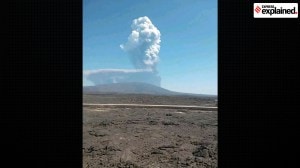Trade, not politics, to drive group of 16 at first East Asian summit
India will let trade — and its huge market — do the talking at the first-ever East Asian Summit, seen as a “historic” op...

India will let trade — and its huge market — do the talking at the first-ever East Asian Summit, seen as a “historic” opportunity to carve out a more cohesive Asian identity.
The day-long retreat in Kuala Lumpur on Wednesday will not only bring together the heads of state of 16 countries — the ASEAN grouping, as well as India, China, Korea, Japan, Australia and New Zealand — but would also involve careful navigation around lots of regional and diplomatic eggshells.
If China’s opposition to India’s presence at the meet has set the tone, the current China-Japan diplomatic spat (a meeting of their foreign ministers at next week’s ASEAN summit has been cancelled) could overshadow EAS. The 10-body grouping of ASEAN is reluctant on a framework as it fears being marginalised. And, of course, there’s the ever-looming absence of the US.
In such an environment — and in the face of ASEAN’s fears — India would like to be seen as a balancing force in this unchartered, annual summit.
According to government sources, Prime Minister Manmohan Singh will emphasise the huge gains both regions have made, economically and via people-to-people contacts, in the last decade since its Look-East policy. Progress in maritime security would also be stressed to highlight to growing level of engagement.
But the focus will be on the growing level of India’s economic engagement with the region. East Asia makes up one-third of India’s trade, making the region a more important trading partner than the EU or US. Trade is also galloping: while China has quickly become our second-largest trading partner, Indo-ASEAN trade at $25 billion is shooting ahead at 30 per cent per annum.
India’s stated decision to bring its industrial tariffs down to ASEAN levels, signalling its intent to align itself early on, as well as the benefits of a leading services exporter — from software to education — will be stressed. But most of all, India’s growing market will be put forth as the key to its relevance in East Asia.
Experts say that even if an East-Asian super state seems an impossibility, the future creation of a free trade zone with all 16 participants is a distinct target. Intra-regional trade in East Asia accounts for half of total trade. Says Nagesh Kumar, director-general of policy thinktank RIS: ‘‘While communities are not built overnight, the economic compulsions are compelling.’’
The movement towards that goal has already begun. China has become Japan’s largest trading partner, and a free trade agreement (FTA) between ASEAN and Beijing will be working by 2020. With most negotiations sorted out, the Indo-ASEAN FTA will kick off in 2007 and will be fully operational by 2016. Australia and New Zealand will also link with ASEAN.




- 01
- 02
- 03
- 04
- 05



























